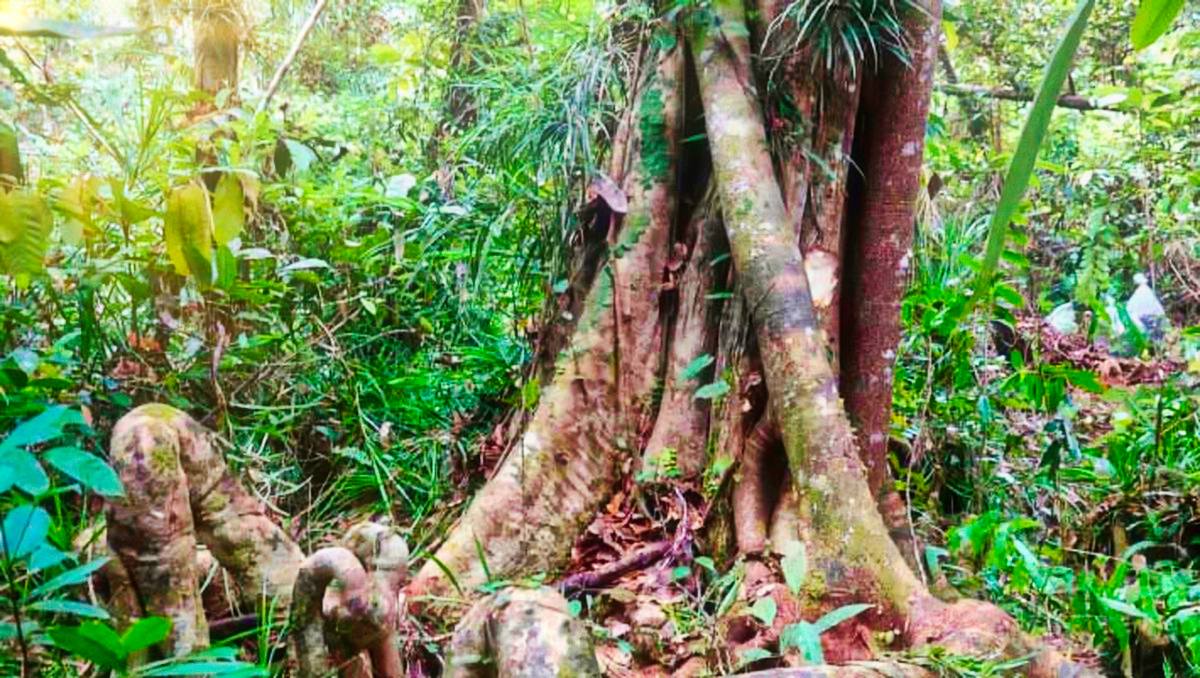Found in the peat swamp forest of Sumatera, Indonesia, Lophopetalum Tanahgambut is a large top canopy tree growing which can grow up to 40 m tall, and has a trunk diameter of up to 1.05 m.
This new fascinating giant tree species belongs to the genus Lophopetalum in the cosmopolitan family Celastraceae.
In case you’re wondering how a giant could go undiscovered until the 21st century. Its habitats, has remained poorly studied, and converted to agricultural land with only 11% of undisturbed swamp forest remaining and with other areas degraded and still undergoing conversion to agriculture.
There are around 9,200 tree species still to be discovered, most of them in the tropics, an incredible new study has revealed.
The genus it belongs, is known to scientists and includes almost 20 currently recognized species that are native to India, Bangladesh, Indonesia, Cambodia, Laos, Malaysia, Myanmar, Nepal, New Guinea, Philippines, Thailand, Vietnam, Australia, and the Andaman Islands.
“Within the Celastraceae family, the tribe Lophopetaleae includes three paleotropical genera with winged seeds that lack an aril: Kokoona, Lophopetalum, and Peripterygia,” said the National University of Singapore’s Environmental Research Institute researcher Agusti Randi and colleagues.
“The largest genus is Lophopetalum with 19 species defined by the inner surface of the petals with various appendages (hence the generic name from the Greek for a crest: lopho–), as well as the 5-merous bisexual flowers with stamens inserted on the disk, a 3-locular ovary, and 3-angular capsular fruits with the wing surrounding the seed.”
“The genus is closely related to Kokoona, with which it shares the 3-angular fruit and winged seeds, but Kokoona has the seeds attached at the base and an apical wing.”
“Lophopetalum extends from India through to northern Australia but species diversity is can be primarily seen on western Malesia, and seven of the 19 accepted species have been reported from the Indonesian island of Sumatra, but all of them range extensions from species described from material from Borneo, India or Peninsular Malaysia.”
Named Lophopetalum tanahgambut, the new species has only been documented from peat swamp forests of the Indonesian island of Sumatra.
“Peat swamp forests are known for their unique bio-diversity and living conditions. It has nutrient-poor, carbon-rich and wet conditions which needs specific adaptations in living organism to survive in,” the researchers explained.
Lophopetalum tanahgambut grows up to 40 m tall and has a trunk diameter of up to 1.05 m.
Its knee roots system is wide, up to 15 m around the tree, raised to 1.5 m high from the ground surface.
Its bark is smooth, cracked longitudinally to flaky, light to dull gray, or milky white. The inner bark is pinkish orange to pale reddish brown; sapwood cream.
“The species is the only known Lophopetalum tree with 3-4 leaves in a pseudoverticillate arrangement,” the scientists noted.
Lophopetalum tanahgambut was observed flowering during February-April, and fruiting in April-June.
“We’ve observed many trees in various life stages (seedling, sapling, pole to large tree) in the wild, and the pseudoverticillate leaves are consistent,” the authors said.
“Opposite (or subopposite) leaves as usually found in the genus but do not occur in this new species.”
“On older branches, we sometimes found opposite leaves but usually there is also a leaf scar slightly below them indicating they are not oppositely arranged from the beginning, but the shift in position as the branchlets mature.”
“If a twig is 3-4 angular depends on the number of leaves at a node, and this is clearly visible when the twigs are still young.”
The researchers recommend that the new species should be categorized as Critically Endangered.
“Lophopetalum tanahgambut grows in relatively undisturbed lowland peat swamp forest, which is protected by the voluntary commitment of the concession as a conservation and retirement area,” they said.
“More extensive collecting in the wider area may reveal otherwise, but for now we must assume a small population size and a restricted distribution in Sumatra.”
“While overall, undisturbed peat swamp forests have declined and are under threat across Southeast Asia, and most remaining peatlands are converted to agriculture or degraded due to drainage.”



